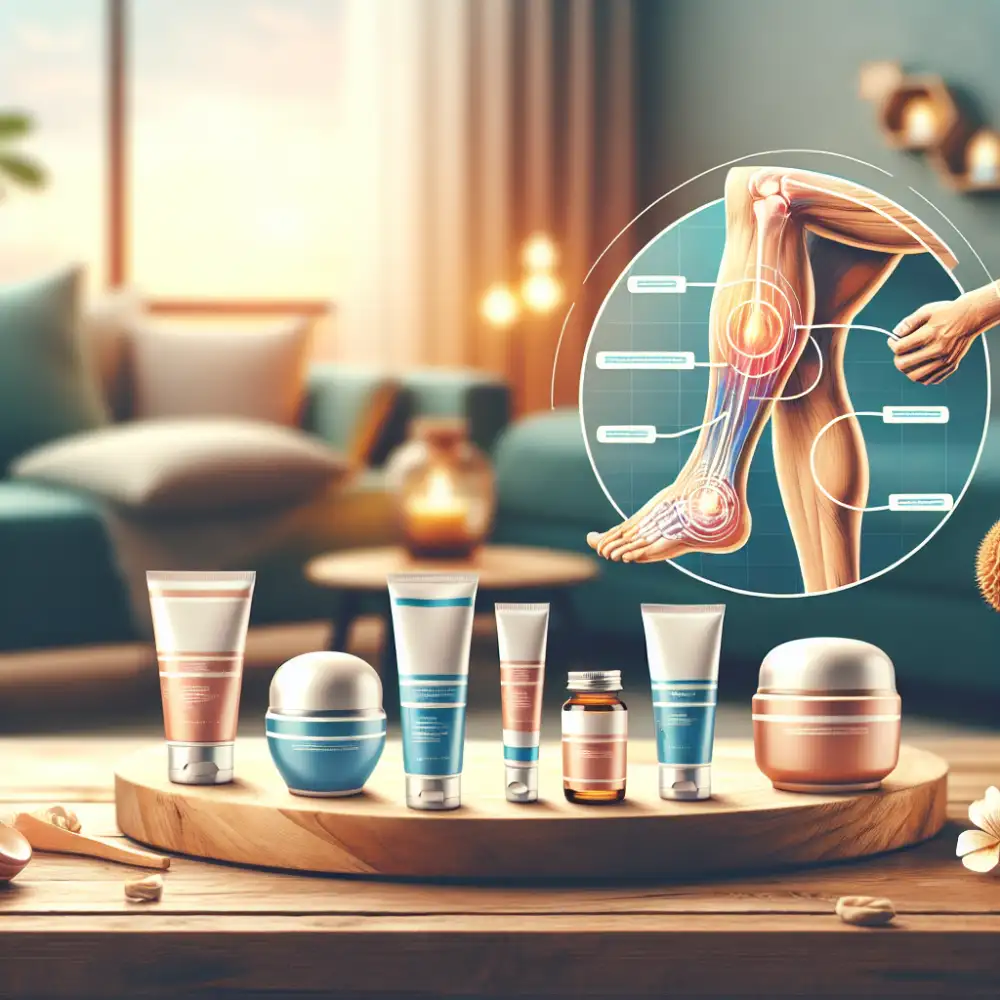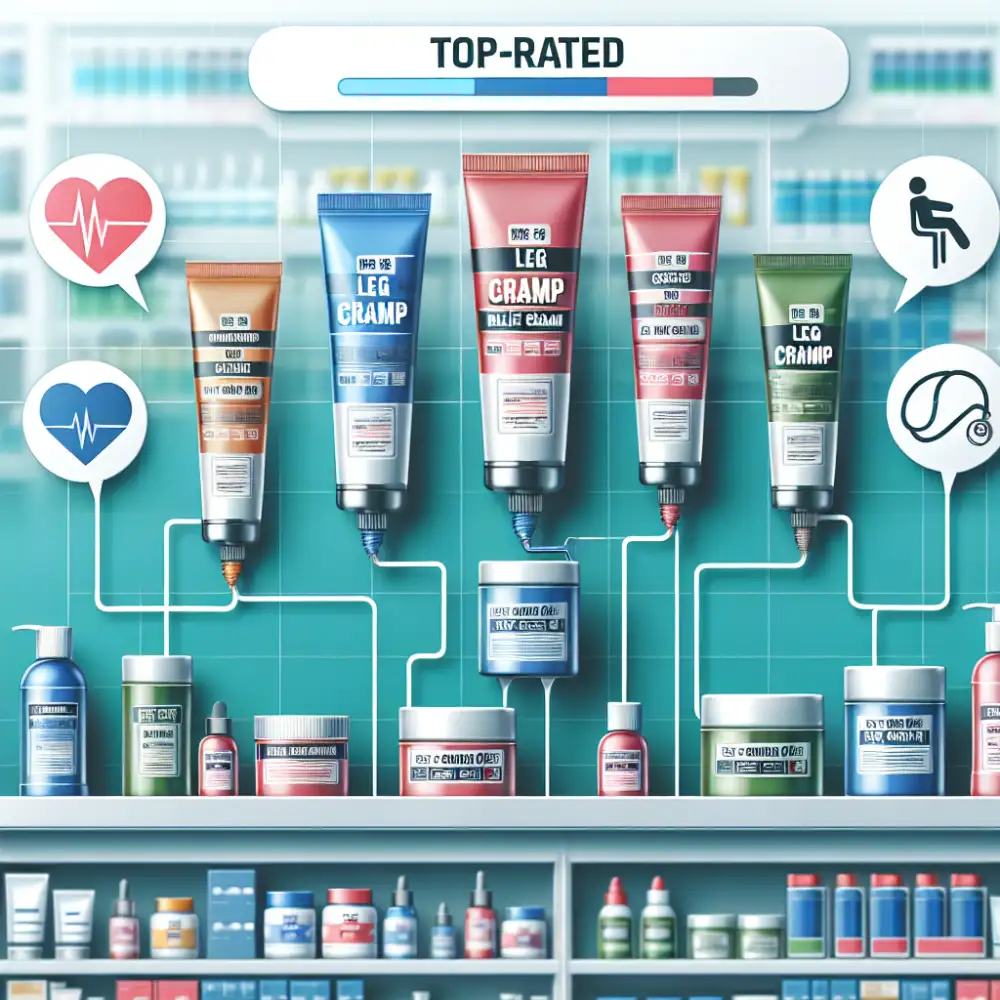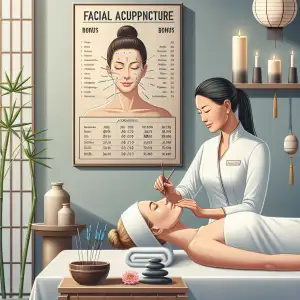Best Creams For Leg Cramps: Soothe Your Muscles

- Understanding Leg Cramps
- Causes and Risk Factors
- When to See a Doctor
- Topical Creams for Relief
- Magnesium Cream Benefits
- Potassium Cream for Cramps
- Lidocaine for Pain Relief
- Arnica for Inflammation
- Menthol for Cooling Relief
- Capsaicin as a Natural Remedy
- Choosing the Right Cream
- Applying Cream Effectively
- Other Remedies for Cramps
- Preventing Future Leg Cramps
Understanding Leg Cramps
Leg cramps are sudden, involuntary muscle contractions that can cause intense pain, usually in the calf, foot, or thigh. They often strike at night, disrupting sleep and leaving your legs feeling sore. While generally harmless, frequent or severe leg cramps can signal an underlying medical condition.
Several factors can contribute to leg cramps, including dehydration, electrolyte imbalances (particularly low potassium or magnesium), muscle fatigue, and poor circulation. Certain medications and medical conditions like pregnancy, diabetes, and thyroid disorders can also increase your risk.
When a leg cramp strikes, stretching the affected muscle is often the quickest way to find relief. Applying heat to relax the muscle or a cold compress to reduce inflammation can also help.
Over-the-counter creams specifically formulated for leg cramps can provide soothing relief. These creams typically contain ingredients like menthol, camphor, or lidocaine that work by either relaxing the muscle, creating a warming or cooling sensation, or temporarily numbing the area to alleviate pain.
While choosing a cream, look for those with natural ingredients and proven effectiveness. It's always a good idea to consult with your doctor or pharmacist, especially if you have sensitive skin or any underlying health conditions. They can help you choose a cream that's safe and effective for you. Remember, while creams can offer temporary relief, addressing the underlying cause of your leg cramps is crucial for long-term prevention.
Causes and Risk Factors
Leg cramps are sudden, involuntary muscle contractions that commonly occur in the calves. While often harmless, they can be painful and disruptive. Several factors can contribute to leg cramps, including:
- Dehydration: When you're dehydrated, your electrolyte balance is thrown off, which is essential for proper muscle function.
- Muscle overuse or strain: Pushing your muscles too hard during exercise or physical activity can lead to fatigue and cramping.
- Prolonged sitting or standing: Maintaining the same position for extended periods can restrict blood flow to your legs, increasing cramp risk.
- Mineral deficiencies: Low levels of electrolytes like potassium, magnesium, and calcium, crucial for muscle contractions, can contribute to cramps.
- Certain medications: Some medications, such as diuretics and statins, can interfere with electrolyte balance or muscle function, potentially causing cramps.
- Medical conditions: Underlying medical conditions like peripheral artery disease, nerve compression, or thyroid disorders can also manifest as leg cramps.
Identifying the underlying cause is crucial for effective treatment. If you experience frequent or severe leg cramps, consult a healthcare professional to rule out any underlying medical conditions.

When to See a Doctor
While over-the-counter creams can provide relief from leg cramps, it's important to know when to consult a medical professional. If you experience frequent, severe, or persistent leg cramps, it's crucial to seek medical advice to rule out any underlying medical conditions.
Consult your doctor if your leg cramps:
are severe or frequent
don't improve with self-care measures
are accompanied by swelling, redness, or warmth in the leg
are accompanied by weakness or numbness
occur for no apparent reason
don't seem to be related to a muscle cramp
Your doctor can help determine the underlying cause of your leg cramps and recommend the best course of treatment, which may include prescription medications, physical therapy, or other therapies.
Topical Creams for Relief
When leg cramps strike, a topical cream can offer soothing relief. These creams work by delivering pain-relieving or muscle-relaxing ingredients directly to the affected area. Here's what to look for:
- Menthol and Camphor: These ingredients create a cooling and warming sensation that can help to distract from pain and potentially improve blood flow.
- Magnesium: While the effectiveness of topical magnesium for cramps is still being researched, some people find it helpful. Look for creams with a high concentration of magnesium.
- Arnica: This herbal remedy is known for its anti-inflammatory properties and may help to reduce pain and swelling.
- Capsaicin: Found in chili peppers, capsaicin creates a warming sensation that can override pain signals. Start with a low concentration, as it can cause initial burning.
It's important to note that while topical creams can provide temporary relief, they don't address the underlying cause of your leg cramps. If you experience frequent or severe cramps, consult your doctor to rule out any underlying medical conditions.
Always follow product instructions carefully. Perform a patch test on a small area of skin before applying to a larger area, especially if you have sensitive skin.
Magnesium Cream Benefits
Magnesium is a natural muscle relaxant, and topical magnesium cream can be a great way to deliver it directly to where you're experiencing cramps. It's thought to work by improving blood flow and reducing nerve excitability, both of which can contribute to muscle cramps.
When choosing a magnesium cream for leg cramps, look for one with a high concentration of magnesium. Magnesium chloride and magnesium sulfate are two common and effective forms. It's also a good idea to choose a cream with other soothing ingredients like arnica, menthol, or aloe vera, which can provide additional relief.

While magnesium cream is generally safe for most people, it's always a good idea to do a patch test on a small area of skin before applying it more widely. This will help you ensure you don't have any sensitivities to the ingredients. If you're pregnant, breastfeeding, or have any underlying health conditions, it's best to consult with your doctor before using magnesium cream or any new topical product.
Potassium Cream for Cramps
While potassium plays a vital role in muscle function, and an imbalance can contribute to cramps, topical potassium creams are not generally considered an effective treatment for leg cramps.
Here's why:
Limited Absorption: The skin acts as a barrier, making it difficult for potassium from a cream to reach muscle tissue in significant amounts.
Lack of Scientific Evidence: There's limited scientific evidence to support the effectiveness of potassium creams for leg cramps.
More Effective Alternatives for Leg Cramp Relief:
Magnesium Creams: Magnesium is better absorbed through the skin and plays a crucial role in muscle relaxation. Look for creams with a high concentration of magnesium chloride or magnesium sulfate.
Topical Arnica: Arnica is a natural anti-inflammatory that can help reduce pain and inflammation associated with muscle cramps.
Capsaicin Cream: Capsaicin, found in chili peppers, creates a warming sensation that can temporarily override pain signals from cramps.
Important Considerations:
Consult a Doctor: If you experience frequent or severe leg cramps, consult your doctor to rule out any underlying medical conditions.
Hydration: Dehydration is a common cause of muscle cramps, so ensure you're drinking enough fluids, especially water and electrolyte-rich beverages.
Stretching: Regular stretching, particularly before and after exercise, can help prevent muscle cramps.
Lidocaine for Pain Relief
Lidocaine is a local anesthetic that numbs the area it's applied to. It comes in various forms, including creams and patches. While some lidocaine products are available over-the-counter, higher concentrations often require a prescription.
| Product Name | Key Ingredients | Application Frequency | Price Range | User Rating (Out of 5) |
|---|---|---|---|---|
| Product A | Magnesium, Arnica | 2-3 times daily | $$ | 4.5 |
| Product B | Potassium, Capsaicin | As needed | $$$ | 4.2 |
People often consider lidocaine creams for muscle pain, including leg cramps. However, the evidence supporting their effectiveness specifically for leg cramps is limited. Lidocaine primarily works by blocking nerve signals, and leg cramps are often caused by muscle contractions or dehydration rather than nerve pain.

If you're experiencing frequent or severe leg cramps, it's crucial to consult a doctor to determine the underlying cause and appropriate treatment. They might suggest other topical options like warming or cooling creams containing ingredients like menthol or capsaicin. Additionally, they may recommend oral medications, such as muscle relaxants, if deemed necessary.
Remember, while lidocaine can be helpful for certain types of pain, it's not a guaranteed solution for leg cramps. Always consult a healthcare professional for personalized advice and treatment options.
Arnica for Inflammation
Arnica is a popular homeopathic remedy for muscle pain and inflammation, but does it really work for leg cramps? While some people find that arnica creams or gels provide relief from leg cramps, there's limited scientific evidence to support these claims.
Leg cramps are often caused by factors like dehydration, electrolyte imbalances, muscle fatigue, and poor circulation. Arnica, on the other hand, is believed to work by reducing inflammation and pain signals.
If you're looking for creams to relieve leg cramps, consider these options:
Magnesium Creams: Magnesium plays a crucial role in muscle function, and topical magnesium creams can help alleviate cramps by replenishing magnesium levels in the muscles.
Menthol or Capsaicin Creams: Menthol produces a cooling sensation, while capsaicin creates warmth, both of which can temporarily distract from the pain of cramps.
Pain Relief Creams containing NSAIDs: Nonsteroidal anti-inflammatory drugs (NSAIDs) like ibuprofen or diclofenac can be found in over-the-counter creams and can help reduce inflammation and pain associated with leg cramps.
It's important to note that while these creams can provide temporary relief, it's crucial to address the underlying cause of your leg cramps. If you experience frequent or severe cramps, consult with your doctor to rule out any underlying medical conditions.
Menthol for Cooling Relief
Menthol is a popular ingredient in many over-the-counter creams for leg cramps. It produces a cooling sensation on the skin that can temporarily relieve pain. Menthol doesn't address the underlying cause of muscle cramps. It simply masks the pain signals.
If you experience frequent or severe leg cramps, it's important to consult with a healthcare professional to determine the underlying cause and discuss appropriate treatment options. While menthol creams can provide temporary relief, they are not a substitute for proper medical advice and treatment.
When choosing a cream for leg cramps, look for products specifically marketed for muscle pain relief. These creams often contain additional ingredients like magnesium or arnica, which may help relax muscles and reduce inflammation. Always follow the instructions on the product label and consult with a pharmacist or your doctor if you have any questions or concerns.

Capsaicin as a Natural Remedy
Capsaicin, the fiery compound in chili peppers, is a popular natural remedy for leg cramps. It works by depleting Substance P, a neurotransmitter that signals pain. By reducing Substance P, capsaicin can help to interrupt the pain signals that cause muscle cramps. Numerous creams and lotions on the market contain capsaicin as an active ingredient. Look for products specifically marketed for muscle pain relief or leg cramps. When choosing a capsaicin cream, start with a low concentration (e.g., 0.025%) and gradually increase the strength if needed.
Always follow the product instructions carefully. Apply a small amount of cream to the affected area and massage it gently into the skin. You may feel a warming or tingling sensation after application, which is normal. Wash your hands thoroughly with soap and water after applying capsaicin cream, and avoid contact with your eyes and mucous membranes. While generally safe for topical use, capsaicin cream can cause skin irritation or burning in some individuals. It's always a good idea to do a patch test on a small area of skin before applying it to a larger area. If you experience any severe or persistent side effects, discontinue use and consult your doctor.
Choosing the Right Cream
When leg cramps strike, a topical cream can offer soothing relief. But with so many options available, finding the right one can feel overwhelming. Consider what's causing your cramps. Is it dehydration, electrolyte imbalance, muscle fatigue, or something else? Some creams target specific causes. For instance, creams with magnesium can help if your cramps stem from a deficiency.
Look for creams containing ingredients like menthol, camphor, or capsaicin. These ingredients work by creating a warming or cooling sensation that distracts from the pain and relaxes muscles. Arnica montana, a natural anti-inflammatory, can also be helpful. It's available in both cream and gel form. If your cramps are frequent or severe, consult your doctor. They can help determine the underlying cause and recommend the best course of treatment, which may include prescription-strength creams or other therapies.
Always patch test a new cream on a small area of skin before applying it more liberally. This helps ensure you don't have an allergic reaction. Remember, while creams can provide relief, they're not a substitute for addressing the root cause of your leg cramps. Maintain a healthy lifestyle with regular exercise, proper hydration, and a balanced diet to help prevent future cramps.

Applying Cream Effectively
To maximize the benefits of your chosen leg cramp cream, follow these application tips:
Cleanse the area: Before applying, gently wash the affected area with warm water and mild soap. Pat your skin dry.
Apply a generous amount: Don't be shy with the cream. Use enough to cover the entire cramping muscle.
Massage gently: Using circular motions, massage the cream into your skin until it's fully absorbed. This helps improve blood circulation to the area.
Elevate your legs: If possible, elevate your legs while the cream absorbs. This can further aid circulation and reduce swelling.
Wash your hands: After applying, wash your hands thoroughly to remove any residue.
Be consistent: For best results, apply the cream as directed on the packaging, even if your cramps subside. Consistency is key to long-term relief.
Consult a doctor: If your leg cramps are severe, frequent, or don't improve with home treatment, consult your doctor. They can help determine the underlying cause and recommend appropriate treatment options.
Other Remedies for Cramps
While topical creams can provide soothing relief from leg cramps, it's essential to consider other remedies that can address the root cause of your discomfort.
Staying Hydrated: Dehydration is a common culprit behind muscle cramps. Make sure you're drinking enough water throughout the day, especially before and after exercise.
Electrolyte Balance: Electrolytes like potassium, magnesium, and calcium play a crucial role in muscle function. Replenish them through foods like bananas, leafy greens, and dairy products, or consider an electrolyte drink.
Stretching: Regular stretching, particularly before and after physical activity, can help prevent muscle tightness and cramps. Focus on stretches that target your calf muscles, hamstrings, and quads.
Massage: A gentle massage can help improve blood flow and relax tense muscles. Consider using a foam roller to massage your legs and release tight spots.
Proper Footwear: Wearing supportive shoes that fit well can help alleviate pressure on your feet and legs, reducing the likelihood of cramps.
Medications: In some cases, your doctor may recommend over-the-counter pain relievers or prescription medications to manage persistent leg cramps.
Remember, it's essential to consult with your healthcare provider to determine the underlying cause of your leg cramps and receive personalized treatment recommendations.
Preventing Future Leg Cramps
While finding relief from leg cramps is a priority, preventing them altogether is the ultimate goal. Thankfully, several strategies, coupled with consistent use of a good leg cramp cream, can significantly reduce the frequency and intensity of your cramps.

Hydration is key. Dehydration is a common culprit behind muscle cramps. Make sure you're drinking enough water throughout the day, especially if you're active or live in a warm climate.
Electrolytes play a crucial role in muscle function. Replenish them after workouts or periods of sweating with electrolyte-rich drinks or foods.
Stretching before and after physical activity can help prevent cramps, particularly in the calf muscles.
Talk to your doctor about potential underlying conditions. In some cases, leg cramps can be a symptom of a medical condition that may require specific treatment.
While these tips can make a big difference, sometimes you need extra support. That's where a good leg cramp cream comes in. Look for creams containing ingredients like magnesium, potassium, arnica, or menthol. These ingredients can help relax muscles, reduce inflammation, and alleviate pain.
Remember, consistency is key when it comes to preventing leg cramps. Make lifestyle changes, incorporate regular stretching, and use your chosen leg cramp cream as part of your daily routine.
Ultimately, the best cream for leg cramps depends on your individual needs and preferences. If you're seeking quick relief, a cream with menthol or lidocaine can provide a cooling or warming sensation that may temporarily override pain signals. For those interested in addressing potential magnesium deficiencies, a magnesium-rich cream could be beneficial. If inflammation is a concern, creams containing Arnica or other anti-inflammatory ingredients might be worth considering.
It's crucial to remember that topical creams are generally considered safe for short-term use, but it's always wise to consult with your doctor, especially if you have sensitive skin, allergies, or underlying health conditions. They can help you determine the underlying cause of your leg cramps and recommend the most effective treatment plan, which may include lifestyle modifications, dietary changes, or other therapies alongside the use of a topical cream. Remember, consistent self-care practices like staying hydrated, stretching regularly, and maintaining a healthy lifestyle can significantly contribute to reducing the frequency and intensity of leg cramps.
Published: 28. 06. 2024
Category: Food



